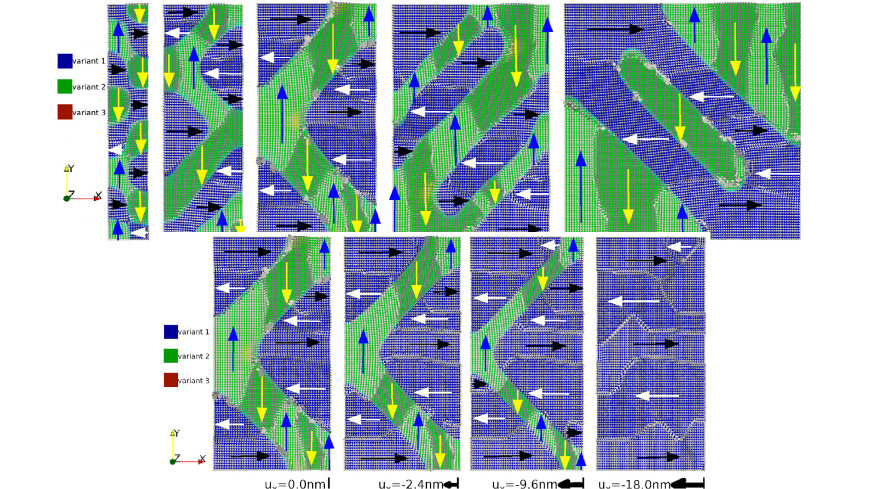Phase-field modelling of paramagnetic austenite–ferromagnetic martensite transformation coupled with mechanics and micromagnetics
New Publication in “International Journal of Solids and Structures”
2022/02/01

Authors: Dominik Ohmer, Min Yi, Oliver Gutfleisch and Bai-Xiang Xu
A three-dimensional phase-field model is proposed for simulating the magnetic martensitic phase transformation. The model considers a paramagnetic cubic austenite to ferromagnetic tetragonal martensite transition, as it occurs in magnetic Heusler alloys like Ni2MnGa, and is based on a Landau 2-3-4 polynomial with temperature dependent coefficients. The paramagnetic–ferromagnetic transition is recaptured by interpolating the micromagnetic energy as a function of the order parameter for the ferroelastic domains. The model is numerically implemented in real space by finite element (FE) method. FE simulations in the martensitic state show that the model is capable to correctly recapture the ferroelastic and -magnetic microstructures, as well as the influence of external stimuli. Simulation results indicate that the paramagnetic austenite to ferromagnetic martensite transition shifts towards higher temperatures when a magnetic field or compressive stress is applied. The dependence of the phase transition temperature shift on the strength of the external stimulus is uncovered as well. Simulation of the phase transition in magnetocaloric materials is of high interest for the development of energy-efficient magnetocaloric cooling devices.



